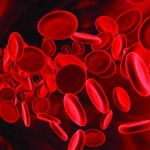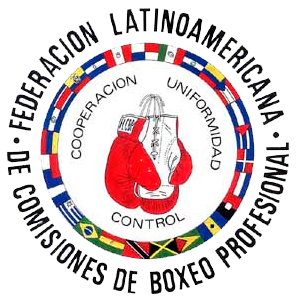 Minyoung Lee*, Jaekeun Oh**
Minyoung Lee*, Jaekeun Oh**
* Professor(additional post), College of Oriental Medicine, KyungHee University, Seoul, Korea
** Associate Professor, Department of Health Care, Korea National Sport University, Seoul, Korea
A Study on Changes of Blood Components during Progressive Body Weight Reduction in Boxers
Ⅰ. Introduction
Most players are willingly reducing their weights to the possible limits as much as they can in order to take an advantageous fighting with a lower level at the weight-level play like Judo, Boxing, Taekowndo and Wrestling. Generally, ACSM (1983) indicates that there is a limit for players to lose by 5-8% (3-5kg) of their weights and also it reports that if players lose their weights rapidly within a short time, it may be the cause of falls in the duration of staying power for boxers during play time, and drops of blood circulations and functions of the heart due to an excessive water loss in bodies (Kyungsun Min, 1994). In general, Players, prior to games, take various trials in order to reduce their body weights, which are to cut down calories at each meal gradually and also to put the limits in the quantities of water intake and to increase the amounts of sweating through exercises. But Reduction of food can result in as followings: a dropping of protein synthesis in the body, an increasing the utilization of fat due to the lack of the amount of carbohydrate absorption, and also, at last there will be a possible problem to decrease the overall quantity of fat composed of water and protein (Donnelly, 1993; Forbes, 1994). Dehydration from the weight loss, in addition, may occur into the change of fluids within the internal and external cells and also it can lead to an abnormal balance of electrolytes (Na+, K+) which takes an important role in muscle membrane poles (Sjogaard, 1985; Sunjang Lee, 1997). Na+ is the most abundant positive ion (90-95%) in the fluid within external cell and it plays an important role in maintaining the osmotic pressure. The amount of Na+ level in serum can affect not only blood plasma and blood pressure but also extracellular fluid and intracellular fluid (Marieb, 1996). K+ is, as a positive ion in the cell, a necessary substance to help the function to maintain the nerve system and muscle normally, including not only the metabolic activity but also the protein synthesis.
As the above mentioned, weight loss within a short time may result in decreasing the overall amount of fat and body water excessively. Due to few domestic studies on boxers, hence, this study is aimed to investigate how the changes are progressing in body components and electrolytes for boxers when 4%, 6% of weight loss respectively.
II. Methods
1. Subjects
For this research, 6 boxers, national-representative-level players in university, were selected who have experienced the weight loss before. They were in healthy condition, which showed the proof that they had taken no medicine and no clinical disease during recent 2 months and also all of them had taken identical exercises every day periodically and regularly. The physical characteristics of them are as follows.
Table 1. The physical characteristics of subjects
Age (yrs) Height (cm) Weight (kg) Career (yrs)
n=6 20.5±1.3 168.9±4.3 60.34±5.48 5.31±2.17
2. Protocols and Methods
1) Weight Reduction
The goals to reduce subjects’ weights for this experiment were designed by 6% loss of each own weight. Based on the previous researches by Singer (1968), Houston (1981), Serfass (1984) and American College of Sports Medicine (ACSM, 1983), it was indicated that players in weight-level match are taking various ways to reduce their weights: such as a diet, less intake of water and sweating through exercises. In this study we took those methods in order to lose their weights. Subjects ate in a diminishing way gradually during 7 days, and then took a fasting during another 7 days: They all used identical ways to lose their weights, which were to increase energy consumption: by restrictive energy intake, by sweating through exercises, and by exercise itself.
Decreasing the amount of calories on every meal during the progressive weight reduction were designed according to caloric tables of food analysis by Korean nutritional recommendation (1995). They were supplied in a total of 2,141 Kcal on the 1st day, a starting day of reduction, with the ratio of calories by 11.5% protein, 24.1% fat, 64.3% carbohydrate, and on the 2nd day, a total of 1,902 Kcal, by 12.7% protein, 31.1% fat, 55.0% carbohydrate, and on the 3rd day, a total of 1,712 Kcal, by 14.1% protein, 18.7% fat, 67.6% carbohydrate. On and after the 4th day, while decreasing general calories and fat progressively, the ratio of protein was recommended to increase. On the 7th day, the last day of reduction, they had a total of 677 Kcal, by 35.2% protein, 9.79% fat, 55.2% carbohydrate. Since the 8th day, fasting was taken after preliminary meals for 2 days (rice soup on the 1st day, thin gruel on the following day).
As for sweating through exercise to lose weight, it was a way as shown in usual training. Subjects had to take a special training with sweating suits for 1 hour in the morning (2km race, training for the basic physical strength) and for another 2 hours in the afternoon. Their weights were measured once every day before breakfast. During the period of decreasing their weights, they had to drink only purified and boiled water. And also they had to use only same cups, 100㎖ of beakers, on every drinking and record how much they drank exactly on each personal chart after drinking.
2) Blood Sampling and Analysis
Blood samples was taken by 5㎖ from the antecubital vein on dawn (06:30-07:00) before reduction and at the time of 4% and 6% of weight loss. Blood was collected into EDTA tube and left as it was for 30 min before centrifugation. After centrifugation at 3000G for 20 min, supernatant was taken as serum sample. Serum samples were stored at -74°C until analysis.
3) Statistical Analysis
Conventional statistical methods by Window SPSS/PC program were used to calculate mean (M) and standard deviation (SD). One-way ANOVA by a repeated measurements was applied to determine the difference in means of body composition and electrolytes among 3 times (before reduction, in 4% reduction, after 6% reduction) within group. Statistical significance was accepted at p<.05.
Ⅲ. Results
1. Changes of Weights
Weight was 60.34+5.48㎏ at first stage and then reduced gradually as long as control weight : On 11th day, weight was reduced by 4.18 % and on 14th day, reduced by 5.85 %, respectively ( Table 2, Figure 1).
Table 2. Changes of %fat and fat wt. according to weight loss
Index beginning 10th day 11th day 13th day 14th day
Weight 60.34±5.48 58.01±6.02 57.82±5.83 56.92±6.00 56.81±5.76
Rate of change -2.33(3.86%) -2.52(4.18%) -3.42(5.67%) -3.53(5.85%)
Values are mean ± SD.
2. Changes of Body Composition
According to body composition before and after weight control, % Fat and Fat Wt seemed to be decreased a little compared with the early stage during weight reduction by 4%, 6%, but, statistically, there was no difference between them (Table 2, Figure 2). Although the changes of % Fat or Fat Wt were a little related with total weight loss, significant changes were appeared in LBM and in TBW compared with the stage before weight loss.(p<.05). LBM decreased by 2.10kg and by 3.08kg at each stage of reduction by 4% and by 6%, respectively. TBW decreased by 1.87kg and by 2.57kg at each stage of reduction by 4% and 6%, respectively (Table 3, Figure 3).
Table 3. Changes of body composition before & after weight control
Index beginning after 4% WC after 6% WC P-value
% Fat 12.02±2.33 11.80±1.60 11.97±1.23 0.973
(%) -0.22 -0.05
Fat Wt 7.25±1.46 6.82±0.80 6.80±0.68 0.635
(kg) -0.43 -0.45
LBM 53.10±1.63 50.99±1.44 50.02±2.07 0.041*
(kg) -2.10* -3.08 beginning vs 4% WC
TBW 36.82±1.09 34.96±1.69 34.26±1.69 0.015*
(kg) -1.87* -2.57** beginning vs 4% WC
beginning vs 6% WC
Values are mean ± SD. ** p<.01, ***p<.01.
WC; weight control, LBM; lean body mass, TBW; total body water
3. Changes of electrolytes
Remarkable changes were appeared in the level of electrolytes in blood serum according to a process of the weight reduction. Na and Cl showed gradual decrease. Na decreased significantly from 146.20+2.38Eq/L at the early stage to 140/57+2.19Eq/L after 6% of weight reduction (p<.05; Table 4, Figure 4). Cl also showed a remarkable decrement from 99.53+1.62Eq/L at the early stage to 97.13+1.09mEq/L after 6% of weight loss (p<01; Table4, Figure 6). On the other hand, K was increased significantly from 4.47 +0.34mEq/L at the early stage to 5.56+0.48mEq/L, 5.70+0.48Eq/L after 4% and 6% weight reduction, respectively (p<.05, .01; Table4, Figure 5)
Table 4. Changes of Electrolytes before & after weight control
Index beginning after 4% WC after 6% WC P-value
Na 146.20±2.38 142.83±2.56 140.57±2.19 .01*
(mEq/L) -3.37 -5.63* beginning vs 6% WC
K 4.47±0.34 5.56±0.48 5.70±0.48 .001**
(mEq/L) +1.09* +1.23** beginning vs 4% WC
beginning vs 6% WC
Cl 99.53±1.62 97.83±1.38 97.13±1.09 <.001***
(mEq/L) -1.7** -2.4** beginning vs 4% WC
beginning vs 6% WC
Values are mean ± SD. *p<.05, ** p<.01, ***p<.01.
WC; weight control.
Ⅳ. Conclusion
The purpose of this study is to investigate how changes of body composition and electrolytes in blood of boxers are proceeding during repaid weight reduction by 4%, and 6%, and the results of those are as follows.
Firstly, the amount and the rate of fat in body had a tendency to decrease compared with before weight reduction. But, no significant difference was appeared statistically.
Secondly, the overall amount of fat and body water were statistically significantly decreased compared with before weight reduction (p<.05, p<.0.5) : the overall amount of fat was 3.08kg and body water was 2.57kg.
Thirdly, statistically significant changes were appeared in the levels of Na, K and Cl, electrolytes in blood(p<.05, p<.01, p<0.01) : Na and Cl were decreased by 5.63mEq/L and by 2.4mEq/L respectively, while, K was increased by 1.23mE1/L compared with the early stage.
Consequently, although fat seemed to be decreased a little during the weight reduction, the decreases of body water and overall amount of fat were appeared to give more effectiveness in the weight loss. In addition, the excessive loss of body water resulted in the loss of Na and Cl (Although K is included, but it is less than Na and Cl), which are main components of sweat. Electrolytes in blood helps to maintain human’s physiological balance and are essential elements for biochemistry metabolism, but if they get out of the standard level, they will fail to keep balance of body consistency. In the case of boxers, rapid weight loss can be not only the cause of lowering of the power to play but also the possibility of serious injury during play. Therefore, they are encouraged to have enough time to adapt themselves to the systematic weight loss rather than take a rapid weight reduction before competition. And also, in the case of excessive weight loss, boxers are advised to take an upper level of weight so that they can avoid a risk to hurt their bodies and prolong their life span as boxers. What is more, scientific and systematic food intake have a great meaning for increasing the power to play during recovery period between after measurement of weight and real match.
Reference
American College of Sports Medicine(1983). Proper and improper weight loss
program. Med sci sports 15(1): 11-13
Donnelly JE, Sharp T, Houmard J, Carlson MG, Hill JO, Whatley JE, Israel RG.
(1993). Muscle hypertrophy with large-scale weight loss and resistance training.
Am J Clin Nutr. 58(4):561-5.
Forbes GB (1994). Exercise and FFM during diet-induced weight loss. Int J Obes
Relat Metab Disord. 18(10):714.
Marieb, EN(1994). Human anatomy physiology, Bejamine/Cummings publishing Co,
584-603
Serfass RC, Gerberich SG (1984). Exercise for optimal health: strategies and
motivational considerations. Prev Med. 13(1):79-99.
Singer RN, Weiss SA (1968). Effects of weight reduction on selected anthropometric,
physical, and performance measures of wrestlers. Res Q. 39(2):361-9.
Sjogaard G, Adams RP, Saltin B (1985). Water and ion shifts in skeletal muscle of
humans with intense dynamic knee extension. Am J Physiol. 248(2 Pt2):R190-6.
















